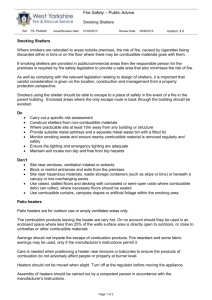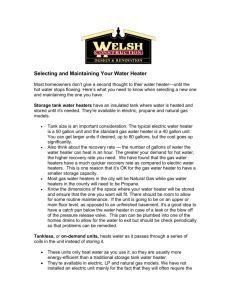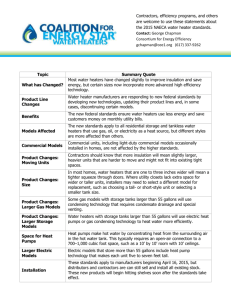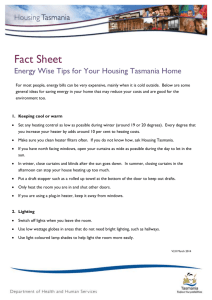Here
advertisement
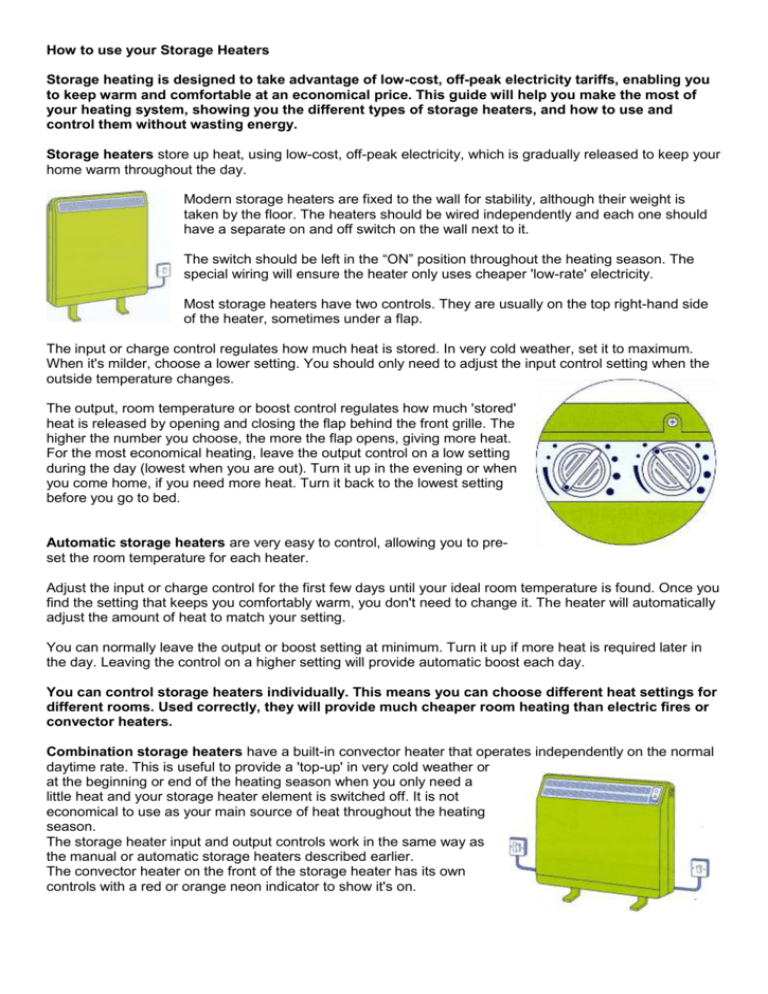
How to use your Storage Heaters Storage heating is designed to take advantage of low-cost, off-peak electricity tariffs, enabling you to keep warm and comfortable at an economical price. This guide will help you make the most of your heating system, showing you the different types of storage heaters, and how to use and control them without wasting energy. Storage heaters store up heat, using low-cost, off-peak electricity, which is gradually released to keep your home warm throughout the day. Modern storage heaters are fixed to the wall for stability, although their weight is taken by the floor. The heaters should be wired independently and each one should have a separate on and off switch on the wall next to it. The switch should be left in the “ON” position throughout the heating season. The special wiring will ensure the heater only uses cheaper 'low-rate' electricity. Most storage heaters have two controls. They are usually on the top right-hand side of the heater, sometimes under a flap. The input or charge control regulates how much heat is stored. In very cold weather, set it to maximum. When it's milder, choose a lower setting. You should only need to adjust the input control setting when the outside temperature changes. The output, room temperature or boost control regulates how much 'stored' heat is released by opening and closing the flap behind the front grille. The higher the number you choose, the more the flap opens, giving more heat. For the most economical heating, leave the output control on a low setting during the day (lowest when you are out). Turn it up in the evening or when you come home, if you need more heat. Turn it back to the lowest setting before you go to bed. Automatic storage heaters are very easy to control, allowing you to preset the room temperature for each heater. Adjust the input or charge control for the first few days until your ideal room temperature is found. Once you find the setting that keeps you comfortably warm, you don't need to change it. The heater will automatically adjust the amount of heat to match your setting. You can normally leave the output or boost setting at minimum. Turn it up if more heat is required later in the day. Leaving the control on a higher setting will provide automatic boost each day. You can control storage heaters individually. This means you can choose different heat settings for different rooms. Used correctly, they will provide much cheaper room heating than electric fires or convector heaters. Combination storage heaters have a built-in convector heater that operates independently on the normal daytime rate. This is useful to provide a 'top-up' in very cold weather or at the beginning or end of the heating season when you only need a little heat and your storage heater element is switched off. It is not economical to use as your main source of heat throughout the heating season. The storage heater input and output controls work in the same way as the manual or automatic storage heaters described earlier. The convector heater on the front of the storage heater has its own controls with a red or orange neon indicator to show it's on. Fan-assisted storage heaters use a fan to control the heat output which blows warm air into the room from the bottom of the heater. Some models also have a built-in convector heater that operates independently on the normal daytime rate in the same way as it does on a combination storage heater. The input or charge control regulates how much heat is stored. In very cold weather set the control to the highest number. When it's milder, choose a lower setting. You should only need to adjust this setting when the outside temperature changes. A fan controls the heat output which blows warm air into the room. Some models have a two-speed fan to regulate the release of heat. Use the low setting for normal use and high or boost setting to warm the room up quickly. Some fan-assisted storage heaters have an automatic input control which has an in-built sensor to monitor the air temperature during the charging period. Once you find the heater setting that keeps you comfortable, you don't need to change it. The heater will automatically adjust its charge to match your setting. During the night, when the heater accepts its charge, ensure the boost is switched OFF and reduce the temperature control setting to MINIMUM to enable the core to accept its full input. If a convector heater is fitted to a fan-assisted storage heater, the on and off switch and room temperature controls are usually on the right hand side of the heater. Remember - make the most of the cheaper stored heat. Only use the convector heater when necessary. Safe use of your storage heating Never cover the surfaces of the heater or obstruct air grilles. Make sure there is a gap of at least 150mm (6") between your curtains and the top of the heater.


